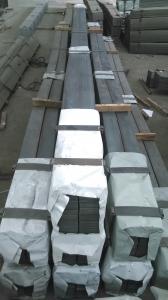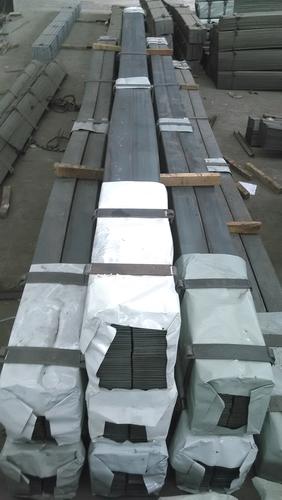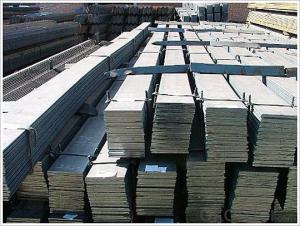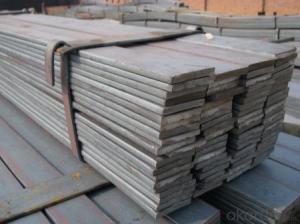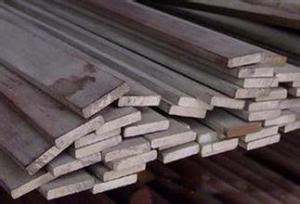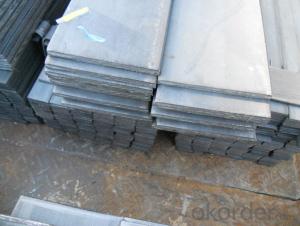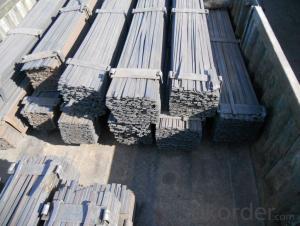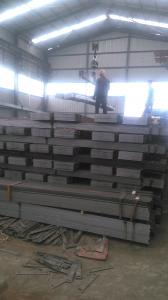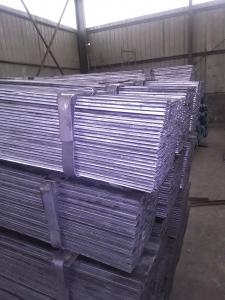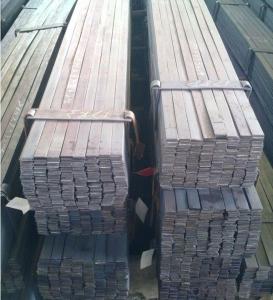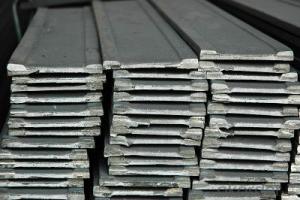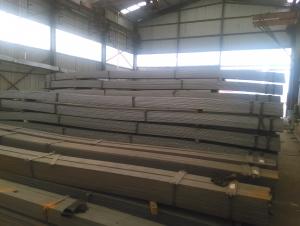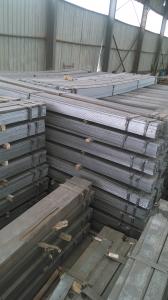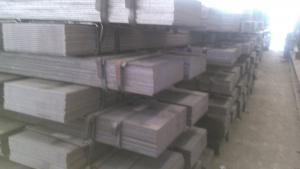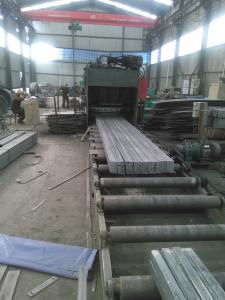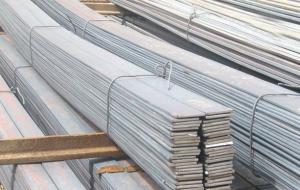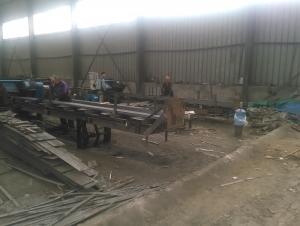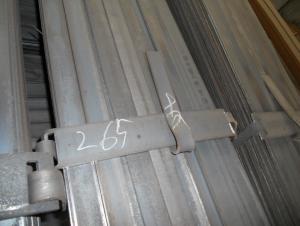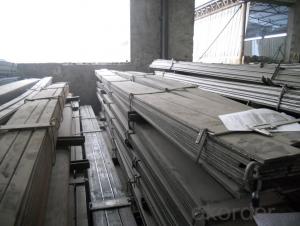Steel Flat Bar Grade JIS SS400 B Added
- Loading Port:
- Tianjin
- Payment Terms:
- TT or LC
- Min Order Qty:
- 50 m.t.
- Supply Capability:
- 10000T m.t./month
OKorder Service Pledge
OKorder Financial Service
You Might Also Like
Product Description:
OKorder is offering Steel Flat Bar Grade JIS SS400 B Added at great prices with worldwide shipping. Our supplier is a world-class manufacturer of steel, with our products utilized the world over. OKorder annually supplies products to African, South American and Asian markets. We provide quotations within 24 hours of receiving an inquiry and guarantee competitive prices.
Product Applications:
Steel Flat Bar Grade JIS SS400 B Added are ideal for structural applications and are widely used in the construction of buildings and bridges, and the manufacturing, petrochemical, and transportation industries.
Product Advantages:
OKorder's Steel Flat Bar Grade JIS SS400 B Added are durable, strong, and wide variety of sizes.
Main Product Features:
· Premium quality
· Prompt delivery & seaworthy packing (30 days after receiving deposit)
· Can be recycled and reused
· Mill test certification
· Professional Service
· Competitive pricing
Product Specifications:
Manufacture: slited
Slitting precision (width) : 0.5 mm or less
Raw material: Q235B, Q345B, Q235-1 b
crosscutting precision (length) : 2 mm or less
Processing: the thickness of 2.0-16 mm;
Shear length: 2000 mm above
Wide degree: 15-1250 - mm;
Leveling precision: 1-2 MM square
Packaging: Export packing, nude packing, bundled
FAQ:
Q1: How many tons of steel products could be loaded in containers?
A1: Usually the steel products are delivered by bulk vessel because of the large quantity and the freight. However, there are no bulk vessel enter some seaports so that we have to deliver the cargo by containers. The 6m steel product can be loaded in 20FT container, but the quantity is changed according to the size, usually from 18tons to 25tons.
Q2: what is the difference between actual weight and theoretical weight?
A2: All the section steel has two weights: actual weight and theoretical weight. Actual weight is the weighing out when the product delivered from the mill. Theoretical weight is calculated by pieces. The invoice can be based on each of them as your request.
Q3: How soon can we receive the product after purchase?
A3: Within three days of placing an order, we will arrange production. The normal sizes with the normal grade can be produced within one month. The specific shipping date is dependent upon international and government factors, the delivery to international main port about 45-60days.
Images:
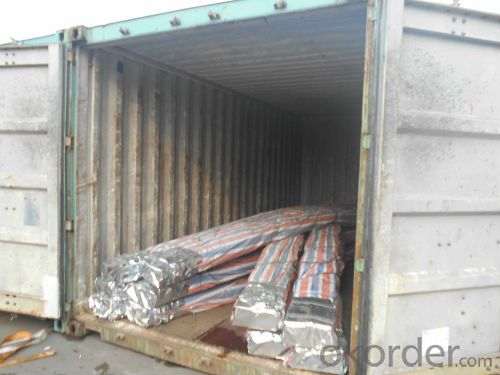
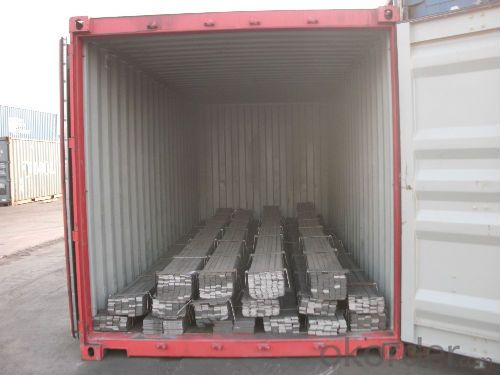
- Q: How is a steel flat bar different from other types of steel bars?
- The shape and dimensions of a steel flat bar set it apart from other steel bars. Unlike round or square bars, a flat bar has straight and flat edges, creating a rectangular cross-section. This distinctive shape makes it perfect for situations that require a flat and even surface. Furthermore, the dimensions of a steel flat bar tend to be wider and thicker compared to other bars. This grants it enhanced strength, stability, and durability, making it suitable for heavy-duty tasks. The broader surface area also allows for improved load distribution and increased rigidity, making it a versatile option for structural support. In addition, the flat shape of the bar facilitates easy and precise fabrication, welding, and machining. Consequently, it is a popular choice in construction, manufacturing, and engineering fields. It can be effortlessly cut, shaped, and manipulated to meet specific requirements, making it a valuable material across various industries. Ultimately, the primary distinctions between a steel flat bar and other steel bars reside in its shape, dimensions, and versatility. The flat profile, wider surface area, and thicker dimensions give it unique characteristics, making it a preferred option for numerous applications.
- Q: Friction coefficient of steel pipe and flat steel on roller table!
- Section steel is one of the four major steel products (plate, tube, mould, wire). According to the section shape, the section steel is divided into simple section steel and complex section steel (Xing Gang). the formerRefers to the steel, round steel, flat steel, angle steel, six angle steel; the latter refers to the I-beam, channel steel, steel, steel, steel frame bending etc..
- Q: Can steel flat bars be used for manufacturing architectural facades or cladding?
- Architectural facades or cladding can be manufactured using steel flat bars, which are versatile and durable. Steel is a popular choice due to its strength and aesthetic appeal. These flat bars can be easily shaped and fabricated to meet specific design requirements, making them suitable for various architectural applications. There are several advantages to using steel flat bars for architectural facades or cladding. Firstly, steel offers excellent structural properties, providing stability and resistance against external forces like wind or seismic activity. This makes it a dependable option for buildings that require a strong and sturdy exterior. Furthermore, steel flat bars can be finished in different ways to enhance their visual appeal. They can be painted, powder coated, or left untreated for an industrial look. Steel's natural gray or metallic appearance can complement a wide range of architectural styles, from modern to traditional. Additionally, steel flat bars are highly resistant to corrosion and weathering, making them ideal for exterior applications. With proper maintenance, steel facades or cladding can withstand harsh weather conditions and maintain their appearance for many years. However, it is crucial to consider specific project requirements and consult with architects, engineers, and manufacturers to ensure that the chosen steel flat bars meet the necessary specifications and standards for architectural facades or cladding.
- Q: Do steel flat bars have a specific tolerance range?
- Steel flat bars indeed possess a specific tolerance range. Tolerance pertains to the permissible deviation from the designated dimensions or attributes of a product. In relation to steel flat bars, the tolerance range typically encompasses variances in terms of thickness, width, and length. The precise tolerance range may differ based on manufacturing standards, steel grade, and the intended application of the flat bars. These tolerances hold significance in guaranteeing that the flat bars satisfy the necessary specifications and can be efficiently utilized in diverse construction and industrial applications.
- Q: Are steel flat bars available with pre-drilled holes?
- Yes, steel flat bars are available with pre-drilled holes. These pre-drilled holes are commonly used to facilitate easy installation and provide a secure attachment point for various applications. Pre-drilled holes can be found in different sizes and patterns, depending on the specific requirements of the project. The availability of pre-drilled holes on steel flat bars offers convenience and time-saving benefits for users, as it eliminates the need for additional drilling or machining. Whether it is for construction, furniture assembly, or industrial applications, steel flat bars with pre-drilled holes are readily available and widely used in various industries.
- Q: How do steel flat bars compare to other materials like concrete or glass?
- Steel flat bars possess several advantages over alternative materials such as concrete or glass. To begin with, steel flat bars exhibit exceptional strength and durability. Boasting a high tensile strength, they can endure heavy loads and resist deformation. In contrast, concrete excels in compression but falters in tension, while glass is brittle and prone to breakage. When considering structural applications, steel flat bars prove to be a significantly more dependable and long-lasting option. Furthermore, steel flat bars provide versatility in terms of design and construction. They can be easily manipulated into various shapes and sizes, rendering them suitable for a wide array of applications. Conversely, concrete necessitates intricate formwork and curing procedures, whereas glass often faces limitations regarding size and shape. Steel flat bars offer greater design flexibility and can be conveniently modified or adjusted when necessary. In addition, steel flat bars exhibit excellent thermal conductivity, rendering them ideal for applications where heat transfer is crucial. Conversely, concrete and glass possess lower thermal conductivity and are less efficient in transferring heat. This quality positions steel flat bars as the preferred choice for applications such as heat exchangers or structural components in buildings that require meticulous temperature control. Moreover, steel flat bars boast superior fire resistance compared to concrete or glass. They can endure high temperatures for extended periods without compromising their structural integrity. Concrete tends to crack and spall under extreme heat, while glass can shatter or melt. Steel flat bars provide exceptional fire resistance, making them a safer option for applications that prioritize fire protection. In conclusion, steel flat bars offer an abundance of advantages over materials like concrete or glass. They exhibit greater strength, versatility, enhanced thermal conductivity, and heightened resistance to fire. These qualities establish steel flat bars as the preferred choice for an array of applications, ranging from structural construction to industrial equipment.
- Q: Why do some buildings need a steel bar around the top?
- Lead line of roof lightning belt. To be exact, galvanized steel or galvanized round steel should be used.Galvanized round bar and galvanized flat steel are of different shapes and different uses.
- Q: What are the different methods of joining steel flat bars?
- There exist multiple techniques for connecting steel flat bars, each having distinct advantages and constraints. 1. The most typical approach is welding. This involves fusing the edges of the bars together, which then cool and solidify to form a robust bond. Welding offers versatility, with options like arc welding, gas welding, or spot welding. 2. Bolting is another well-liked method. It entails drilling holes in the bars and securing them with bolts and nuts. Bolting allows for easy disassembly and reassembly, making it suitable for temporary connections or situations requiring frequent maintenance. 3. Riveting involves using metal fasteners called rivets to join the bars. A hole is drilled through the bars, and a rivet is inserted and secured by hammering or mechanical pressing. Riveting provides a strong and permanent connection, but it demands specialized tools and skills. 4. Adhesive bonding is a method employing industrial adhesives to connect steel flat bars. The adhesive is applied to the surfaces, and pressure is applied to achieve a robust bond. Adhesive bonding can be a viable alternative when welding is unsuitable or when a more visually appealing joint is desired. However, its bond strength may be lower compared to welding or mechanical fastening methods. 5. Mechanical fasteners, such as screws, nails, or clips, can also be used to join steel flat bars. These fasteners are inserted into pre-drilled holes or slots in the bars and tightened to secure the connection. While mechanical fasteners offer quick assembly and disassembly, their strength may not match that of welding or riveting. When choosing the appropriate method for joining steel flat bars, it is crucial to consider factors like the intended use, load-bearing requirements, aesthetics, and ease of assembly. Each method has its own advantages and constraints, and the best choice will depend on the specific application.
- Q: Galvanized steel flat welding occurs after the material itself crack.
- Thermal cracking: most of the material being welded is alloy, and the solidification of the alloy starts from the beginning to the end, which is carried out in a certain range, which is the basic cause of the thermal crack.
- Q: Can steel flat bars be used for making shelving or storage units?
- Yes, steel flat bars can be used for making shelving or storage units. Steel flat bars are strong, durable, and have a high weight-bearing capacity, making them suitable for supporting heavy loads. Additionally, they can be easily welded or bolted together to create sturdy and customizable shelving or storage units.
Send your message to us
Steel Flat Bar Grade JIS SS400 B Added
- Loading Port:
- Tianjin
- Payment Terms:
- TT or LC
- Min Order Qty:
- 50 m.t.
- Supply Capability:
- 10000T m.t./month
OKorder Service Pledge
OKorder Financial Service
Similar products
Hot products
Hot Searches
Related keywords
